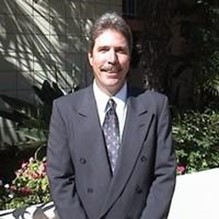Home > Good Intentions, Failed Attempts, Evolution: A Brief History of the Prevention Code of Ethics
Many efforts are currently underway to prevent the misuse of opioids, stimulants, and other substances today. The opioid epidemic and the importance of prevention has garnered much needed attention in recent years. However, there is a long history of various attempts to thwart these issues in past decades. To understand the present and to plan for the future, one must strive to gain an appreciation of the past. From the temperance movement to the introduction of heroin to treat morphine addiction and alcohol use disorder, good intentions often resulted in failed prevention attempts. In many instances, efforts to improve circumstances resulted in more harm instead. As this cycle repeated itself over decades, a movement grew to establish the code of ethical conduct and evidence-based practices present in today’s prevention field.
Prevention Ethics Takes Shape: The Formation of NAPPA
Following several drug epidemics and many failed prevention attempts, frustration grew among prevention professionals. Ted Strader, who served in both the treatment and prevention fields early on, held a unique understanding of both fields. Inspired by his frustration with the lack of tangible results, unnecessary human suffering, a lack of funding for the prevention field and dysfunction within the field, Strader decided to take matters into his own hands by founding the National Association of Prevention Professionals and Advocates (NAPPA) in 1986. NAPPA was intended to unify the prevention field and work toward professionalizing the field in hopes of achieving better results, better funding, and more respect.
Strader began by calling each state’s health department and substance use treatment and prevention branches to gather information about the prevention professionals in their respective states. He also contacted most large school systems in the country which may have had alcohol and drug prevention departments. Strader and his team then wrote letters to all of the individuals they identified inviting them to join NAPPA and to meet for the first time at the 1986 Alcohol and Drug Problems Association conference in St. Louis. To Strader’s surprise, hundreds of prevention professionals attended this meeting in St. Louis, and attendees were encouraged to spread the word, to develop statewide chapters, and to advocate for credentialing of the field. Prevention researchers were also invited to help professionals produce evidence-based programs, reduce harm, and enhance the scientific recognition of prevention. Eventually, NAPPA’s membership grew to over 1000 members. Strader raised thousands of dollars to host yearly NAPPA conferences in his home state of Kentucky where members convened to discuss pressing issues in the field and express their concerns.
respective states. He also contacted most large school systems in the country which may have had alcohol and drug prevention departments. Strader and his team then wrote letters to all of the individuals they identified inviting them to join NAPPA and to meet for the first time at the 1986 Alcohol and Drug Problems Association conference in St. Louis. To Strader’s surprise, hundreds of prevention professionals attended this meeting in St. Louis, and attendees were encouraged to spread the word, to develop statewide chapters, and to advocate for credentialing of the field. Prevention researchers were also invited to help professionals produce evidence-based programs, reduce harm, and enhance the scientific recognition of prevention. Eventually, NAPPA’s membership grew to over 1000 members. Strader raised thousands of dollars to host yearly NAPPA conferences in his home state of Kentucky where members convened to discuss pressing issues in the field and express their concerns.
The Beginning of a New Standard: The Original Prevention Code of Ethics
Approximately 3-4 years after the inception of NAPPA, it was apparent that three prominent schools of thought existed around the prevention field: 1) Some believed the prevention field should be focused on mental health. 2) Some believed that prevention and treatment should be synchronous and comprehensive. 3) Some believed that prevention was undervalued and treated as secondary to treatment and should therefore be separated and professionalized. Many advocated for credentialing of the prevention field while others opposed it.
As the president of NAPPA, Strader observed these differing views among the NAPPA members and aimed to guide the group to a common goal everyone could agree upon, the development of the Code of Ethical Conduct for Prevention Professionals. NAPPA members who supported credentialing viewed the introduction of a prevention code of ethics as a first step towards credentialing while those who opposed credentialing viewed the code as satisfactory for professionalizing the field (Mowrer & Strader, 1992). While it is crucial for substance use treatment and prevention to inform each other, there was a need for a prevention specific code as the two sectors operated in a number of different ways; most notable was that the treatment arm follows a medical model while the prevention arm follows a public health model.
Following the introduction of the prevention ethical code of conduct, prevention professionals in several states worked to establish prevention credentialing in their respective states. After NAPPA dissolved as a national organization in 1996, several state chapters continued on into the late 2000s and eventually, another group of prevention professionals, the Prevention Think Tank (PTT), revised the prevention code of ethical conduct in 2003. Since NAPPA’s dissolution, Ted Strader has continued to focus his efforts on serving the prevention field and enhancing best practices, resulting in three of his prevention programs being listed on over a dozen national and international evidence-based program repositories.
Today’s Prevention Code of Ethics
 The International Certification & Reciprocity Consortium (IC&RC) oversees several credentials in the field of substance use prevention. As the largest existing credentialing organization, the mission of IC&RC is “to promote public protection by offering internationally-recognized credentials and examinations for prevention, substance use treatment, and recovery professionals” (International Certification & Reciprocity Consortium, 2021). The IC&RC Prevention Committee consists of representatives from 54 states and jurisdictions. Following the dissolution of NAPPA and PTT, the IC&RC Prevention Committee made the decision to house the Prevention Think Tank Code of Ethical Conduct on the IC&RC website. Presently, all Certified Prevention Specialists (CPS) are required to sign a prevention code of ethics and participate in six hours of prevention- specific code of ethics training or coursework.
The International Certification & Reciprocity Consortium (IC&RC) oversees several credentials in the field of substance use prevention. As the largest existing credentialing organization, the mission of IC&RC is “to promote public protection by offering internationally-recognized credentials and examinations for prevention, substance use treatment, and recovery professionals” (International Certification & Reciprocity Consortium, 2021). The IC&RC Prevention Committee consists of representatives from 54 states and jurisdictions. Following the dissolution of NAPPA and PTT, the IC&RC Prevention Committee made the decision to house the Prevention Think Tank Code of Ethical Conduct on the IC&RC website. Presently, all Certified Prevention Specialists (CPS) are required to sign a prevention code of ethics and participate in six hours of prevention- specific code of ethics training or coursework.
Two IC&RC representatives, Julie Stevens & Sandra Del Sesto (personal interview, May 2021), shared some of the developments since the prevention code of ethics was revised by the PTT in 2003. Following IC&RC’s adoption of the prevention code of ethics, further issues have emerged that were not previously addressed. Consequently, new language was developed by the IC&RC Prevention Committee that states and jurisdictions can choose to add to enhance their code of ethics. Some of the additional topics include social media, gender identity, lobbying vs advocacy, and dual relationships. The IC&RC Prevention Committee periodically revisits the current prevention code of ethics and considers potential revisions based on emerging issues. Julie Stevens also led the group to create a Prevention Google Group for representatives to facilitate a dynamic exchange of information that has led to improvements in many states.
Prevention Ethics Courses Now Offered by SAMHSA’s PTTC Network
Because the Certified Prevention Specialist credential requires six hours of prevention ethics training, demand has remained high for this course offering. SAMHSA’s Prevention Technology Transfer Center (PTTC) network now offers a free six-hour asynchronous virtually-moderated course and a three-hour self-paced prevention ethics course. The six-hour course was launched in April 2021 and the two-week sessions will be offered about every month throughout 2021 and beyond. Guided by an expert moderator, participants learn alongside others in virtual learning forums that provide opportunity to apply and explore the ethical principles. Initial participant reception has been very positive. The three-hour self-paced course is the same content, but does not include the learning forums or a moderator.
The prevention field attracts well intended individuals ready to work towards change and improve the lives of others. These change-makers are invaluable to the field. However, history must inform our present decisions and remind us that while good intentions are necessary, they are not sufficient. We must work towards incorporating evidence-based practices and ethical principles in order to reduce harm and improve lives.
About the Author
 Michele Baker, CHES® serves as a Project Coordinator for the Opioid Response Network (ORN). She holds a Bachelor of Health Sciences with minors in Public Health and Chemistry from the University of Missouri-Kansas City (UMKC). During her time with UMKC, Michele also served as an Undergraduate Researcher, Epidemiology Supplemental Instructor, and Diabetes Prevention Program Facilitator. Prior to her role with the ORN, Michele has also served as a consultant for the Addiction Technology Transfer Center (ATTC) Network Coordinating Office, a member of ORN's Leadership Team. As a Certified Health Education Specialist and Kansas Public Health Fellow, Michele strives to continually spread her passion for prevention, community health research, and education during her endless quest for growth and enlightenment.
Michele Baker, CHES® serves as a Project Coordinator for the Opioid Response Network (ORN). She holds a Bachelor of Health Sciences with minors in Public Health and Chemistry from the University of Missouri-Kansas City (UMKC). During her time with UMKC, Michele also served as an Undergraduate Researcher, Epidemiology Supplemental Instructor, and Diabetes Prevention Program Facilitator. Prior to her role with the ORN, Michele has also served as a consultant for the Addiction Technology Transfer Center (ATTC) Network Coordinating Office, a member of ORN's Leadership Team. As a Certified Health Education Specialist and Kansas Public Health Fellow, Michele strives to continually spread her passion for prevention, community health research, and education during her endless quest for growth and enlightenment.
References & Acknowledgments
Del Sesto, S., & Stevens, J. (2021). Personal Interview.
International Certification & Reciprocity Consortium. About IC&RC. (2021). Retrieved from
https://internationalcredentialing.org/about
Mowrer, S. H., & Strader, T. N. (1992). National Association Addresses Tough Prevention Issues. The Journal of Primary
Prevention, 13 (1), 73-77.
Strader, T. N. (2021). Personal Interview.